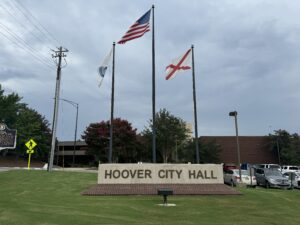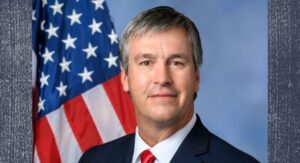Kay Ivey declares special session a success
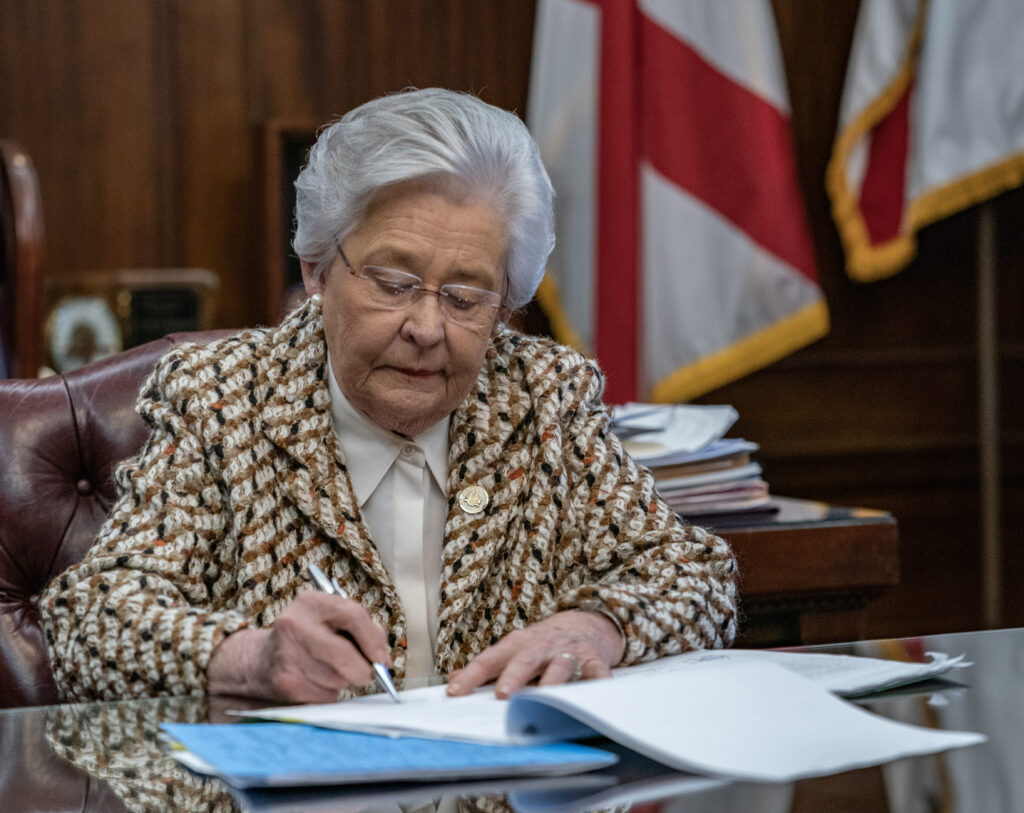
Governor Kay Ivey declared the 2023 First Special Session a success on Thursday afternoon after signing both bills into law. House Bill 1 appropriated $1,060,000,000 in federal American Rescue Plan Act (ARPA) funds. “I commend the Alabama Legislature for, once again, answering the call to invest these one-time funds wisely to make improvements in Alabamians’ quality of life, including water, sewer, and broadband expansion projects, as well as health care,” Gov. Ivey said. “Alabama can now look to a future of greater promise thanks to the steps we have taken this week to invest these funds wisely.” Gov. Ivey also signed Senate Bill 2, a supplemental appropriation from the state general fund to pay off the remaining debt to the Alabama Trust Fund. “Eleven years ago, during more challenging economic times, the state made a pledge to repay $437 million borrowed from the Alabama Trust Fund in order to bolster the General Fund,” Gov. Ivey said in a statement. “Last week, I called upon the Alabama Legislature to finally pay back the remainder of these borrowed funds, noting that, unlike D.C., we pay our debts. Today, I am pleased to report that lawmakers have responded to my call by swiftly passing legislation appropriating the final $59,997,772 payment due to the Alabama Trust Fund. This is responsible stewardship of the people’s money and a fitting start to a historic Session. I am proud to sign this Act restoring the Alabama Trust Fund.” The state was forced to prorate the education trust fund (ETF) and state general fund (SGF) budgets in the fiscal year 2011 following the Great Recession of 2008 to 2010. The Legislators in 2009 and 2010 had wrongly expected a quick bounce back in the economy, so they did not make the cuts in the budgets needed to prepare state government for the new revenue realities once reserves and federal bailout funds were exhausted, resulting in a much harder budgetary hit than should otherwise have been necessary. In 2014, voters approved a plan to allow the Legislature to raid the Alabama Trust Fund (ATF). The ATF is funded by oil and gas revenues and serves as the state’s investment account. A portion of that money’s earnings is used for several purposes, including supporting the SGF. Legislators promised voters that they would pay that money back. The state took $437 million from the ATF and made annual payments to pay that back for years. SB1 takes SGF surplus dollars left over from the fiscal year 2022 to pay back the remaining $59,997,772 balance freeing up fSGF revenues for other purposes moving forward. HB1 appropriates $339,175,000 for healthcare, including $25 million for Mental health and $9 million for the expansion of telemedicine. $260 million will be used for broadband expansion, including a cybersecurity component. $395 million will go to water and sewer projects, and $55 million will be used to compensate state agencies for the negative impacts of the COVID-19 pandemic. $1,179,000 will go for administrative costs of overseeing and allocating the money. This is the second and final tranche of the ARPA money. Ivey called the special session during her state of the state address on March 7. Now that the special session is over, the 2023 Alabama Legislative Regular Session will resume on Tuesday. To connect with the author of this story or to comment, email brandonmreporter@gmail.com.
State Superintendent warns that financial cliff is 18 months away as federal Covid relief dollars run out

The federal government has flooded the state with billions in COVID relief dollars through the CARES Act and the American Rescue Plan Act. Nowhere has more one-time money flooded into budgets than in public schools. “Those funds are going away in time,” said State Superintendent Eric Mackey addressing the Permanent Joint Legislative Committee on Finance and Budgets-Education on Thursday. “We are going to have that funding cliff that we have been talking about,” Mackey said. “There are three tranches of federal money: Cares round one, Cares round 2, and then the American Rescue Act,” Mackey explained. “That money has to be spent by September 2024. The is only 18 months away.” “In 2021 and 2022, you gave us the funding for summer reading camps – about $18 million a year,” Mackey said. “We have used federal set aside funds in 2023 and 2024.” Much of those federal dollars went to local school systems directly, and that money was not appropriated by the Legislature, so it is being spent by local school boards and local school administrators. Mackey warned that the federal government encouraged systems to use that one-time money to add staff, but there is no long-term funding mechanism for continuing to pay for those positions once the one-time money is exhausted. “If you hired a teacher with these funds, you would for certain run out of money by September 2025, and it could be sooner than that,” Mackey said. Mackey said the State Department of Education has a COVID relief dashboard on its website. There you can see the federal dollars that went to every school district, how much of that money is left, and how it has been spent. Mackey used Gulf Shores in Baldwin County as an example. “Gulf Shores has spent 66% of their federal funds,” Mackey said. “They were given $50.04 million between all three tranches (of money). $33 million has already been spent. Some districts have only spent 25 percent of their money. In some rural districts, they can’t find the people. The teacher shortage is one issue. In some cases, they can’t find teacher aides in their communities. I never thought I would see the day where we had more money but can’t find the people.” “The last tranche of money runs out in September 2024,” Mackey said. The money presently has to be spent by then. Mackey explained, however, that if they contracted to buy a piece of equipment, but due to supply chain issues, it has not arrived yet. The system could still use those federal dollars for that purchase even if it does not occur until after the September 30, 2024, deadline. Mackey is optimistic that the U.S. Treasury will allow the state and school systems to have another year to spend all of that one-time federal money, but presently the deadline is still September 30, 2024. None of this is a problem in the fiscal year 2024 budget that the Legislature will prepare to go into effect on October 1. The fiscal cliff comes into effect in the 2025 fiscal year budget when school systems look to the state or their local school boards to make up those funds, or schools will have to cut positions and programs funded with these one-time federal dollars. In the 2023 education trust fund (ETF) budget, the Legislature appropriated $8,261,590,649 for education, an increase of $589,014,074 from fiscal year 2022. The 2023 Alabama Legislative Regular Session begins on Tuesday, March 7. To connect with the author of this story or to comment, email brandonmreporter@gmail.com.
State legislature discusses use of American Rescue Plan funds
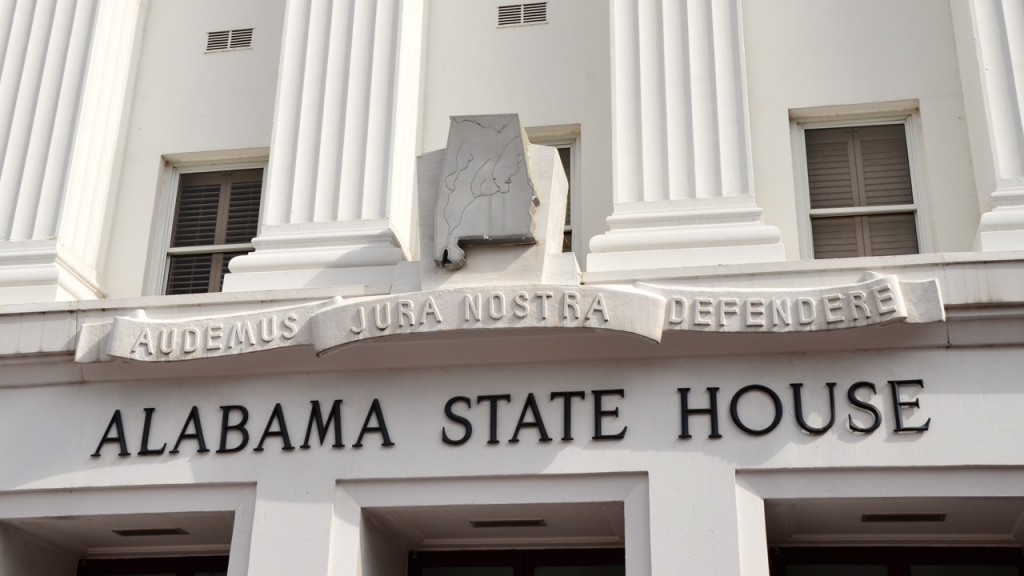
On Tuesday, the Joint Legislative Committee met to review state officials’ progress in spending the first billion dollars from the American Rescue Plan Act (ARPA) money. The state received this funding from the federal government to fight the COVID-19 global pandemic and make the state more resilient against future pandemics. State Sen. Greg Albritton presided over the meeting at the Statehouse across the street from Alabama’s historic Capitol Building. “This is not dealing with the General Fund or the Education Fund,” Sen. Albritton said. “It is not even dealing with ARPA 2 money. This is the Oversight Committee for the ARPA 1 money.” Kirk Fulford is the director of the Alabama Legislative Services Agency (LSA) fiscal division. “There were three tranches of federal money,” Fulford explained. “The first tranche was CARES Act which has mostly been appropriated. This is a total of several bills, not just the three.” “The funds must be spent by December 31, 2026,” Fulford said. “Alabama was appropriated $2.12 billion.” Fulford explained that Counties and cities of 50,000 people or more had already gotten their own money directly from the federal government. Smaller cities had to go through a grant program administered by the state. The state’s first tranche of money arrived in June 2021—the second in July 2022. The law requires the money to be split. “We treated this money separate and apart from either of our budgets due to the reporting requirements in how this money is utilized,” Fulford explained. Fulford explained that the Legislature had appropriated $225 million for water and sewer projects and $51 billion for broadband. $536 million of the money replaced lost state revenues due to the global pandemic. That money had fewer federal restrictions on how that could be spent. The state spent $400 million to build new prisons in Elmore and Escambia Counties. There will be no revenue replacement in the second tranche. Fulford explained that the state would have to stay within the specific guidelines outlined by the treasury with all of the second tranche of money. That money has not been appropriated yet. “You used $277 million for broadband infrastructure thus far,” Fulford said. “It doesn’t look like we are going to have any revenue replacement money going forward. Of the $953 billion appropriated to states, $223 billion was for lost revenue replacement.” Former State Rep. Bill Poole is now the state finance director. “We will be tightly bound to the ARPA guidance, unlike Round 1,” Poole said. “We have encountered many folks come to us and say that this state used their ARPA funds to fund this project or that,” Poole said. “That usually comes out of their Revenue Replacement funds.” Poole said the state does not qualify for any more Revenue Replacement funds, so there are fewer options for the tranche two money. “Quarterly reports are due every quarter,” to the federal government. Poole said, “That has been a substantial ordeal, and it will continue to be going forward. The federal reporting requirements are extremely complex.” In addition to the $400 million for prison construction money, the state Legislature has appropriated $80 million for hospitals and nursing homes. In 2022, the Legislature made an additional appropriation of $80 million for hospitals and nursing homes. “Those funds have been distributed,” Poole explained. “Alabama is eligible for $192 million for capital projects,” Poole said. “We were very pleased to see those (the state’s plans) approved by the Treasury. We hope to direct a substantial portion of the funds, if not all, to broadband.” “The state of Alabama has received no negative audit findings on ARPA funds,” Poole added. “The administrative costs have been held below one percent.” “Local governments and cities are receiving notices of audits in terms of CARES Act funds,” Poole announced. “If you don’t have a clear report, you are going to get an audit finding. You need to be able to show a positive outcome from the funding.” To connect with the author of this story or to comment, email brandonmreporter@gmail.com.
Kay Ivey announces more money for broadband coming to Alabama

The federal government is sending Alabama more money to extend broadband access to more people in the state. Alabama Governor Kay Ivey announced on Thursday that the U.S. Treasury Department has approved the state’s plan for the Capital Projects Fund, making $191.8 million available for broadband expansion. “Access to broadband is a necessity in today’s world, and I continue to make it a priority that our state has the full ability to be connected to high-speed internet,” said Gov. Ivey. “I often say that broadband expansion is a journey, not a short trip. These funds will enable us to take several more strides in that journey toward full access no matter where you live in Alabama.” The Alabama Department of Economic and Community Affairs will administer the funds as part of a grant program to support projects to extend service to previously unserved areas of the state. “Under Governor Ivey’s leadership and with a strong team effort among the Legislature, internet service providers, and many others, the state has made progress in expanding access to high-speed internet,” said ADECA Director Kenneth Boswell. “While the need is still great, these funds will enable us to make further progress in closing the digital divide in Alabama.” The funds are part of the American Rescue Plan Act (ARPA). Last year the Alabama Legislature approved these dollars for broadband expansion. ADECA was then tasked with creating a plan outlining use of the funds and submitted it to the U.S. Treasury Department in September 2022. The Treasury announced approval of that plan on Thursday. ADECA’s Alabama Digital Expansion Division will roll out the competitive grant program in the coming months. The program will be modeled after the Alabama Broadband Accessibility Fund, which ADECA has administered since 2018. The grants will be available for internet service providers to make “last-mile” connections to previously unserved homes, businesses, and community institutions. Once connected, residents will have the ability to become a customer of the broadband providers. The broadband is not free, and residents don’t have to actually subscribe to the service. Grant projects approved must provide connections of at least 100 megabits per second download/100 megabits per second upload. The governor has made increasing access to broadband a top priority of her administration. She promised in her inaugural address to make Alabama a national model when it comes to broadband expansion. Since 2018, Ivey has awarded $63.9 million in state funds to support 100 projects through the Alabama Broadband Accessibility Fund. Once all those projects are completed, access to broadband will be available to approximately 61,000 more households, businesses and community institutions that currently have no option to subscribe. To connect with the author of this story, or to comment, email brandonmreporter@gmail.com.
Justin Bogie: Why Medicaid expansion is a bad idea for Alabama
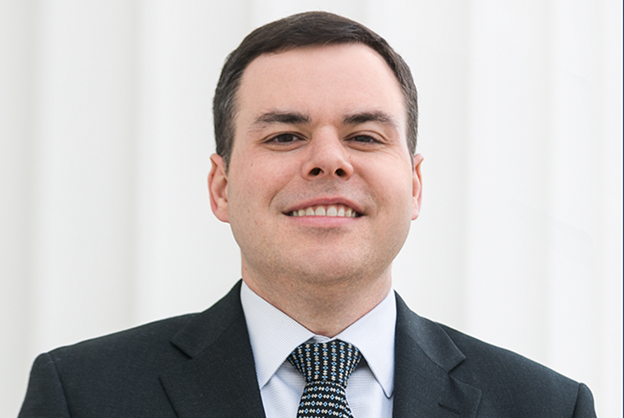
As the Legislature heads toward its 2023 regular legislative session, calls for Medicaid expansion are likely to increase. Alabama remains one of 12 states that has not expanded coverage under Obamacare. The question is, will state lawmakers continue to resist the pressure to expand Medicaid or go full speed ahead? For a state that has a Republican supermajority in the legislature, the answer should be a resounding “no” on fully expanding Medicaid. But given the rapid growth of Alabama’s state government over the past few years, the prospect of more federal dollars flowing into the state may be too much for limited government proponents to overcome. Under the provisions of Obamacare, states that expand Medicaid to adults with incomes at or below 138% of the federal poverty level receive a 90% federal matching rate. The American Rescue Plan Act (ARPA) of 2021 added an additional 5% match rate over two years for states that have not already expanded Medicaid coverage. According to The Public Affairs Research Council of Alabama (PARCA), Medicaid expansion would cost the state an average of $225 million per year through 2027. PARCA estimates that the additional federal funding, as well as new tax revenues, would allow the state government to realize net savings of more than $1 billion by 2027. Keep in mind that the state has already expanded coverage for new mothers from 60 days to 12 months. This would not affect them. Future expansion would make all adults who meet the income requirements eligible for Medicaid. On paper, it may look like a no-brainer. Expand coverage and bring an extra $1 billion into the state in the next five years. In reality though, it’s not that simple. It’s not that simple. First, there is the issue of costs and savings. If Alabama expands Medicaid, the state government will be putting nearly $250 million more per year into its program by 2027. While more money will be coming back to the state from Washington, most of it will be going into the Medicaid program. And $250 million will just be the start. These cost estimates are not dynamic. Because of rising healthcare costs and shifting demographics, Medicare is on pace to go insolvent by 2028. Medicaid will face similar cost and enrollment increases due to these factors. Federal matching rates could also change. Obamacare originally offered expansion states a 100% match rate. That was later reduced to 90%. The 5% additional match included in ARPA would go away two years after expansion. Without other healthcare reforms, Medicaid costs will continue to rise while federal matching rates could decrease, taking up a larger portion of the state budget each year. Where does that leave the Department of Corrections, Economic and Community Affairs, judicial system, and other agencies funded by the general fund? If there’s a shortfall, Alabamians will pay for it through higher taxes, despite the fact that the state government is already taking more from you than ever before. There is also this notion that federal money is somehow free money. It is not. It represents money that the government has already taxed from you, future taxes, and an ever-growing national debt. In 2008, the federal government spent $201 billion on the Medicaid program. Last year Medicaid spending grew to $521 billion, a 159% increase in 13 years. By 2032, the Congressional Budget Office (CBO) projects that Medicaid spending will hit almost $800 billion annually. CBO estimates the national debt will grow by $18 trillion over the same period. So, while Alabama’s government may see a “profit” from expanding Medicaid, you, your children, your grandchildren, and future generations will be giving more money to the federal government to pay for it. The issue of federalism is also at the heart of the Medicaid expansion debate. More money from the federal government means more strings attached. Alabama will have less say over how it runs its Medicaid program. This has already happened in other expansion states. Under the Trump Administration, the Centers for Medicare and Medicaid Services (CMS) generally approved waivers allowing states to put work requirements in place for able-bodied adults. At least six expansion states had work requirement waivers approved under Donald Trump, which were then withdrawn by CMS under the directives of the Biden Administration. Alabama filed such a waiver for its existing Medicaid program, which would have required most parents to work at least 35 hours per week to maintain eligibility. CMS never approved the waiver, and Alabama withdrew the application after Joe Biden became President. Estimates show that 200,000 to 340,000 people could become eligible for Medicaid if Alabama expands the program. The state would be able to set few requirements for benefit recipients, meaning they would have less incentive to contribute to the state’s workforce. Why would the state government want to create another disincentive to work when businesses are already struggling to fill positions? Before Alabama lawmakers bow to the pressures to expand Medicaid, they must carefully consider the long-term impacts on the state budget. More importantly than Alabama’s bottom line, they must consider how it will impact the people they represent. When the federal government offers something that sounds too good to be true, it probably is. Justin Bogie is the Senior Director of Fiscal Policy for the Alabama Policy Institute.
ADECA says Alabama broadband plans are nearly ready for approval

The Alabama Department of Economic and Community Affairs (ADECA) was tasked with expanding broadband in the state prior to the pandemic, but COVID-19 revealed the necessity for expanding high-speed internet and has brought federal funds and increased urgency. ADECA Director Kenneth Boswell told Alabama’s economic developers the state is ready to spend $85 million in America Rescue Plan Act (ARPA) funds to expand broadband in the state and is seeking nearly $200 million more in Alabama’s Capital Projects Fund for further expansion. Speaking at the Economic Development Association of Alabama’s 2022 Summer Conference, Boswell said Alabama Gov. Kay Ivey first sought to work broadband into ADECA’s mission in 2017. The Alabama Rural Broadband Coalition pushed for legislation in 2019. That legislation eventually passed, and Ivey signed it into law in July 2021. The ARPA funding was a response to the pandemic when quarantines exposed the need for connectivity for people working from home, doing distance learning for school, and needing telemedicine for health care. “(The pandemic) magnified how bad that we needed it,” Boswell said. “It’s quality of life, it’s health care, it’s education – in today’s world, broadband impacts and affects us in every way, shape, form, and fashion.” Boswell said there is a need for $4 billion to $6 billion to expand broadband in the state, but two plans are at least a start. Companies like C Spire, Point Broadband, and Tombigbee Communications have been working with Alabama Power and others to bridge the state’s digital divide since 2019. Boswell said systems with the infrastructure and networks have the main lines of access – known as the “first mile” – and local providers can connect homes and businesses with what is known as the “last mile.” The need is the “middle mile” between the two, and that is where ADECA plans to spend the $85 million in ARPA funds. “We have five applications in-house right now, and we hope to have those graded, and an announcement made hopefully in the next two weeks,” Boswell said. The other ADECA plan seeks to use funds from the state. “Our second process is the actual Capital Projects Fund with $191 million,” Boswell said. “We have the plan complete. We’re doing all of our checks and balances as we speak. We will submit that to (the Alabama Department of) Commerce. They have up to a year to actually approve the plan, but we’re hoping that because of our advancements with our plan program that we will actually get that done quicker, by hopefully six months.” Those expenditures are in addition to the billions more being spent by private companies helping to expand broadband throughout Alabama. Learn more about Alabama Power’s Economic and Community Development initiatives at AmazingAlabama.com. Republished with the permission of Alabama NewsCenter.
Robyn Hyden: We can’t wait another decade: It’s time for Alabama to expand Medicaid

It’s been a decade of missed opportunity. On June 28, 2012, the U.S. Supreme Court ruled in NFIB v. Sebelius that Alabama and other states were not required to implement the Affordable Care Act fully. The decision declared that states could opt out of expanding Medicaid to provide health coverage to adults who have low incomes and could not otherwise afford insurance. Despite the ruling, a generous offer remained on the table: The federal government would fund Medicaid expansion in its entirety for the first three years and cover 90% of the cost thereafter. Still, Alabama sat by and did little even as 17 of our hospitals have closed since 2010. We watched with no response as more than 300,000 of our friends and neighbors – folks who make too little to afford private insurance but too much to qualify for our bare-bones Medicaid program – struggled to afford needed health treatments or simply went without care. We waited for help to come as major health indicators – including labor force participation rates, maternal mortality rates, substance use disorders, and mental health outcomes – continued to languish. During those ten years, we witnessed 38 of our neighboring states take the deal that we did not. The results speak for themselves. While many of Alabama’s rural hospitals closed, Arkansas expanded Medicaid back in 2014 and retained their rural hospitals and providers. While more than 600 Alabamians die every year due to lack of health coverage, Louisiana expanded Medicaid back in 2016 and saw a reduction in premature deaths. And while Alabama lost out on more than $1 billion in additional tax revenues that would have strengthened our economy and supported our long-term economic success, our federal tax dollars went to fund health care in other expansion states, including Kentucky, Missouri, Oklahoma, and Virginia. The good news is this: A new Medicaid expansion deal is now on the table, and it is even better financially than before. The American Rescue Plan Act offers additional incentives to states that have yet to expand Medicaid to ensure we don’t miss out. With these incentives, Alabama could more than afford to provide coverage for those 300,000 friends and neighbors who are struggling to make ends meet and pay for health care. Evidence is strong that states that build a strong social safety net, including more expansive Medicaid programs, enjoy faster economic recovery from recessions than those that don’t. And these federal funds will provide the most benefit to those most harmed during the COVID-19 recession. Medicaid expansion also will help K-12 schools and universities across Alabama by generating significant increases in income and sales tax revenues – the funding sources most at risk of decline in times of economic instability. When we look back on this moment ten years from now, I’d like for the story of Medicaid expansion to be one of an embraced opportunity. Let us say Alabama’s leaders brought billions of dollars back home to invest in our health care, our economy, and our people. Let us say we weathered the ups and downs of economic instability and came out stronger. And let us say we did it all because of leaders who had the courage, the vision, and the foresight to invest today in the Alabama of 2032. Robyn Hyden is executive director of Alabama Arise, a statewide, member-led nonprofit organization advancing public policies to improve the lives of Alabamians who are marginalized by poverty. Arise’s membership includes faith-based, community, nonprofit, and civic groups, grassroots leaders, and individuals from across Alabama. Email: robyn@alarise.org.
Kay Ivey awards $10 million in Covid-19 grants for emergency services providers
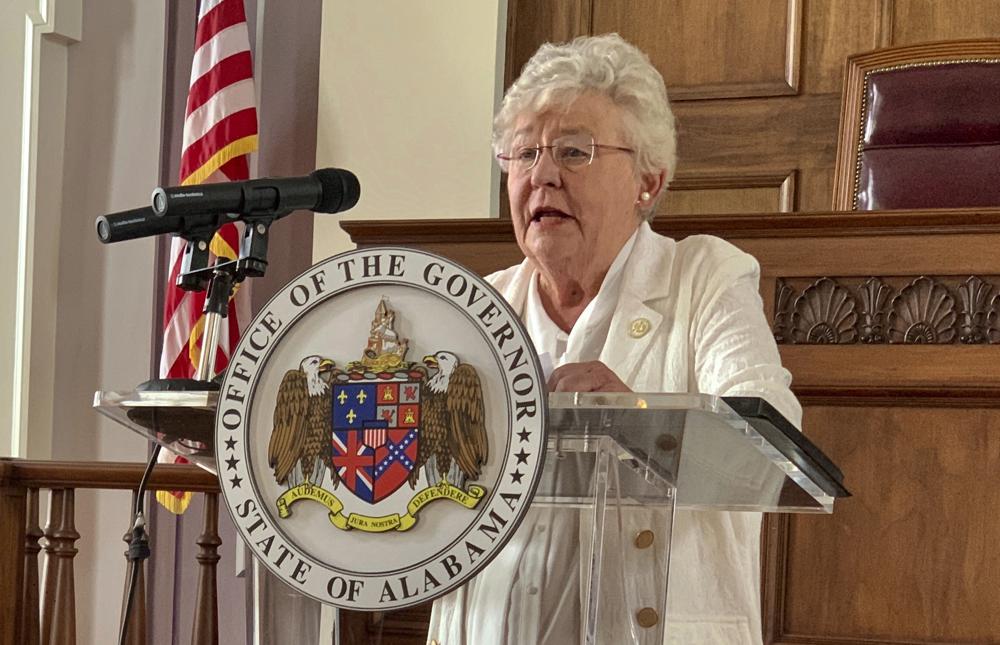
On Wednesday, Gov. Kay Ivey announced $10 million of the State Fiscal Recovery Fund from the American Rescue Plan Act (ARPA) has been awarded to establish COVID recovery grants for emergency services providers. The program aims to provide support to Alabama’s emergency services providers that have been financially impacted by the COVID-19 pandemic. Eligible applicants for this grant program are volunteer rescue squads, E-911 Boards, and emergency services providers that are not an agency or department of a city, county, state, or federal government. Alabama will offer grants up to $10,320 for providers that meet eligibility requirements. The application period for the Alabama Emergency Services Provider Grant Program will be open from noon April 27 through noon May 13, 2022. “Alabama’s emergency service providers greatly supported our communities throughout the pandemic, often times putting their own lives on the line to provide rapid care. Now, we are in a position to return the favor and help them in their recovery efforts,” stated Governor Ivey. “I appreciate the Alabama Legislature for their partnership in making this critical funding available to our emergency service providers, and I encourage them to apply and utilize these funds to further invest in public safety services.” Alabama received $2.1 billion in ARPA funds. The Alabama Legislature appropriated $136,796,346 of that to Alabama’s State Fiscal Recovery Revenue Replacement Fund with $10 million of these funds to be distributed to Alabama’s emergency services providers.
Kay Ivey awards $80 million in COVID-19 relief funds to hospitals and nursing homes
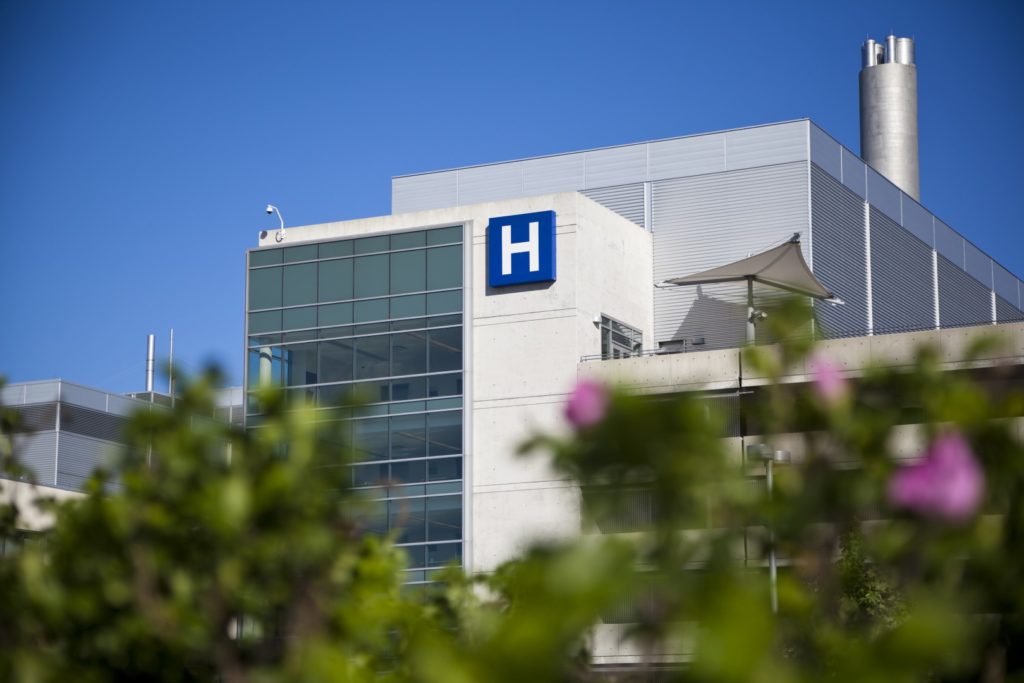
On Wednesday, Gov. Kay Ivey awarded an additional $80 million of the State Fiscal Recovery Fund from the American Rescue Plan Act (ARPA) to provide reimbursements for the state’s hospitals and nursing homes. These funds will support two grant programs of up to $40 million each, one administered by the Alabama Hospital Association and the other by the Alabama Nursing Home Association. Alabama received $2.1 million in ARPA funds, and the Alabama Legislature appropriated $80 million from Alabama’s State Fiscal Recovery Fund for these programs. “Alabama is showing the rest of the country that we can learn to live with this virus and move on with living our lives. As we close the door on this thing, I once again give my utmost appreciation and thanks to the medical professionals and staff in our hospitals and nursing homes across the state,” stated Ivey. “These men and women, no doubt, deserve our praise for getting us through this. I commend the Alabama Legislature for appropriating these dollars to continue helping our hospitals and nursing homes get back on their feet.” Don Williamson, MD, President and CEO of the Alabama Hospital Association applauded Ivey’s efforts to provide funding to Alabama’s hospitals. “For two years, Alabama’s hospitals and their staff have remained at the forefront of pandemic response, providing care to their communities 24-hours-a-day, 7 days a week” stated Williamson. “Alabama’s hospitals are grateful for the $40 million appropriated during the most recent special session. This financial assistance is part of the ongoing commitment of the administration and the Alabama legislature to ensure Alabama’s hospitals remain operational, preserving access to care for all Alabamians.” Brandon Farmer, Alabama Nursing Home Association President & CEO, thanked Ivey for her efforts to help patients and residents receive high-quality care. “On behalf of Alabama long-term care sector, I thank Governor Ivey, the Alabama Legislature and the Department of Finance for allocating these funds to nursing homes and their consistent support throughout the pandemic,” stated Farmer. “Governor Ivey has shown unwavering support to nursing homes throughout the pandemic. These funds will enable nursing homes to continue their recovery and provide the high-quality care patients and residents deserve.”
Kay Ivey awards $10 million to volunteer fire departments

Gov. Kay Ivey awarded $10 million of the State Fiscal Recovery Fund from the American Rescue Plan Act (ARPA) to establish COVID recovery grants for volunteer fire departments. This program provides support to Alabama’s volunteer fire departments impacted by the covid-19 pandemic. “Alabama’s first responders, including our community’s volunteer fire departments, are vital in keeping our state safe. While states across the country and the entire globe dealt with the curveballs the pandemic threw, our volunteer fire departments kept going,” stated Ivey. “I am proud to have worked with the Alabama Legislature to direct these funds to good use as our local volunteer fire departments recover. I am pleased to support them and encourage them to take advantage of this grant program.” The state of Alabama will offer grants in an amount up to $10,320 for providers that meet eligibility requirements. The application period for the Alabama Volunteer Fire Department COVID Recovery Grant program will be open from noon, March 7 through noon, March 25, 2022. Alabama received $2.1 million in ARPA funds, and the Alabama Legislature appropriated $136,796,346 from Alabama’s State Fiscal Recovery Revenue Replacement Fund for this program.
Alabama lawmakers approve pandemic-related tax exemption

Alabama lawmakers on Thursday approved legislation so families won’t have to pay state income tax on the monthly child tax credit payments they received under the federal pandemic relief package. The Alabama Senate and Alabama House of Representatives on Thursday approved identical versions of the bill. The measure now goes to Alabama Gov. Kay Ivey. The bills passed without a dissenting vote. Republican Rep. Jim Carns said Alabama, unlike many other states, did not have an automatic adjustment in its tax code that excluded the federal benefit from the calculation of taxable income. “Every state in the nation except Alabama and Louisiana had automatic systems in their revenue department to make this tax-free. Without us doing a statute, it would not be tax-free. So, this is fulfilling the intent of the (American Rescue Plan) funds that were sent to working families who had children at home,” said Carns, the sponsor of the bill in the Alabama House of Representatives. The American Rescue Plan Act increased the federal child tax credit that families can claim each year, and eligible families received six monthly deposits as a partial advance on the credit. Eligible families received $300 monthly for each child under 6 and $250 per child older than that. The approved legislation means the additional tax credits will not count against the federal deduction people use to lower their state income tax. “It was roughly $250 per month per child that was received by families. So now as they file their tax returns, they will be in a position to get a credit to exempt that from income,” Republican Sen. Dan Roberts said. Roberts, who sponsored the Senate version of the bill, estimated that the change would save families with two children about $200. People who have already filed their state income tax forms will have to file an amended return to claim their full federal deduction, Carns said. “Most folks have not filed yet,” Carns said. “Those few that have filed are going to have to come back and do a corrected tax filing.” Republished with the permission of the Associated Press.
Alabama Legislature approves spending for $772 million in COVID relief funds

Alabama lawmakers have approved a plan to spend $772 million in federal pandemic relief dollars on the expansion of high-speed Internet access, water and sewer projects, health care needs, AL.com reported. The House passed the bill 100-0, and the Senate passed it 26-0. Gov. Kay Ivey commended the Alabama Legislature upon final passage of legislation to appropriate the American Rescue Plan Act funding. Ivey commented, “I am pleased Alabama will use these one-time federal dollars wisely thanks to the strong work by our Legislature. I commend our legislators for their efficient work in directing these funds to meet some of Alabama’s toughest challenges. We are making smart investments to increase statewide broadband connectivity, improve our water and sewer infrastructure, as well as health care infrastructure. We are also addressing measures to reduce employment taxes paid by Alabama businesses as they continue to rebound from the pandemic. This was an overwhelmingly bipartisan effort by the men and women of the Alabama Legislature, and I am proud of their good work in dealing with the task the federal government dealt us.” The plan received support from the Republican majority and the Democratic minority in both chambers. The plan allocates what remains of Alabama’s first portion of funding from the American Rescue Plan Act. Lawmakers voted last year to spend $400 million in ARPA funds to help build two prisons and provide $80 million to hospitals and nursing homes. Alabama will receive the second portion, $1.06 billion, in May or June. The plan approved today allocates: $277 million for broadband expansion. $225 million for water and sewer infrastructure projects. $80 million for hospitals and nursing homes. $79.5 million for Alabama’s unemployment compensation trust fund to restore it to near the level of January 2020. $37 million for health care services through assisted living facilities, mental health, rehabilitative services, and other entities. $30 million for rural hospitals. $20 million for emergency medical responders, including $10 million for volunteer fire departments. $11 million for counties to help pay for state inmates held in county jails because of the pandemic. $7.8 million for the cost of the reporting and auditing requirements for using the money. $5 million for telemedicine.

